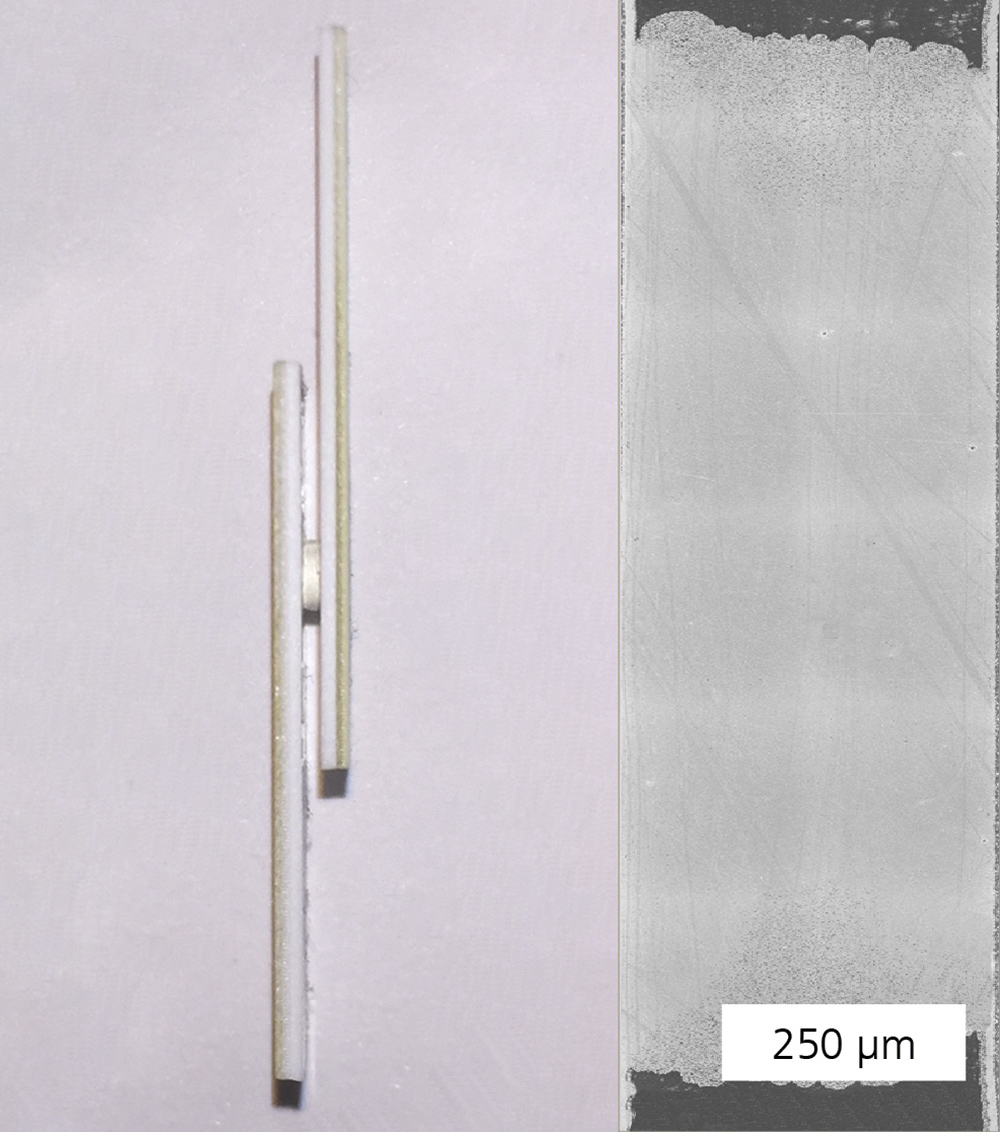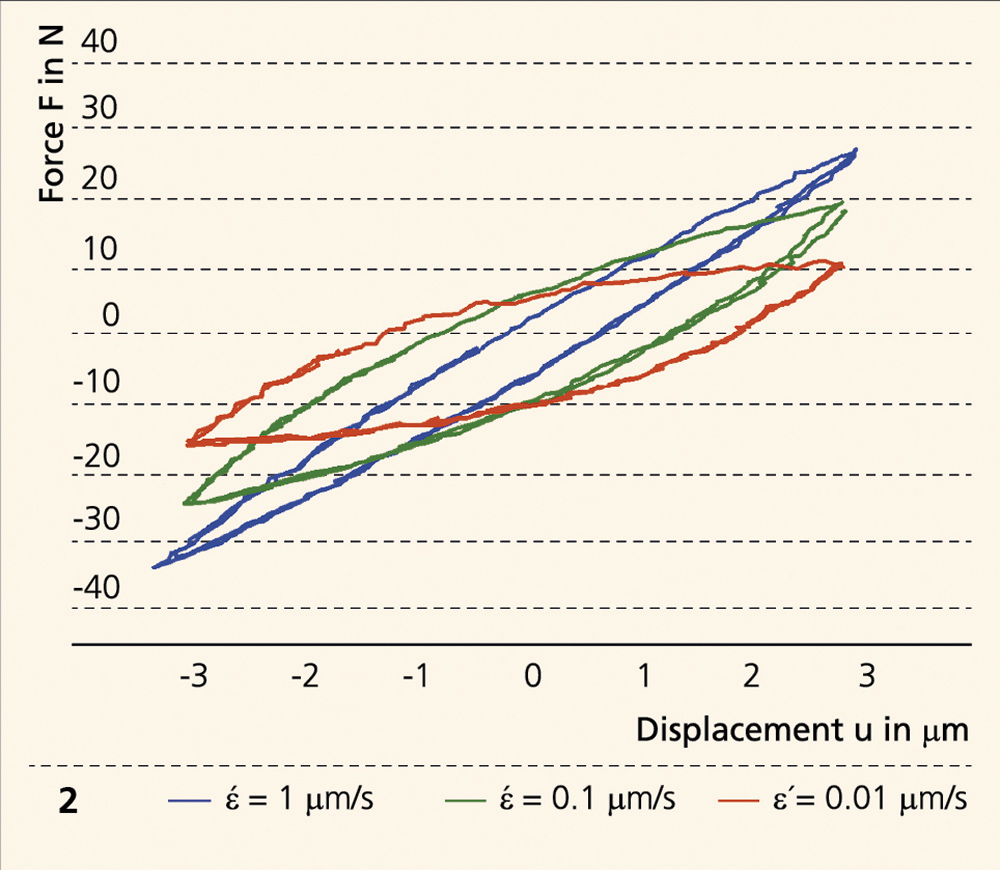
Micromechanics of silver-sintered interconnects in power electronics
Current research



The power electronics market is growing continuously at a rate of 8 to 10 % per year. The reasons for this are the electrification of mobility, renewable energy technologies and the increasing transport of electrical energy. More and more electric and hybrid vehicles (electric vehicles/EV, hybrid electric vehicles/HEV) will be equipped with a new generation of increasingly temperature- resistant SiC chips. With barrier layer temperatures upward of 175 °C, new high-performance packaging solutions are required.
Silver sintering is a joining technology that promises highly reliable interconnections and may be able to replace current soft solder connections, which have a temperature limit of around 150 °C. Ag sinter connections are processed under pressure at 230 °C and are therefore melt-resistant at temperatures up to 900 °C. Silver sinter contacts generate a microporous structure during pressure- and temperature-based sintering. This porosity influences the mechanical properties of the contacts. Mechanical creep and relaxation behavior, as known from soft solder material, also occur in porous sinter contacts. Plastic deformation can be observed at temperatures above 120 °C, and this effect intensifies further above 230 °C. Fraunhofer IKTS scientists have now measured these expansion rate-dependent plastic deformations and discovered time- and temperature-dependent creep behavior.
The team at IKTS has developed a mechanical measurement system and method for the characterization of Ag sinter joints. The method includes the technological manufacturing process of silver sinter interconnections as lap shear specimens (Figure 1, left) under industrial process conditions. The micro lap shear specimen allows a very high degree of parallelism between connection pads, comes with an adjustable sintered area footprint and creates a homogeneous microstructure within the joint. As this technology is already mature, it is possible to reliably create specimens free of defects and voids (Figure 1, right). The contacts are characterized mechanically by determining the porosity of the sinter structure with high-resolution imaging analysis and quantitative determination of the porosities. Subsequent micro- mechanical measurements up to temperatures of 300 °C and the calculation of mechanical properties using the finite element method (FEM) form the basis for creating characteristic data sets. These are transferred into mechanical models suitable for FEM and thus allow dimensioning robust and long-term stable power electronics assembled with silver sinter contacts.
Future efforts will systematically investigate the correlation between microporosity, Ag sinter paste materials and mechanical creep properties. The characterization of sinter contacts is particularly relevant for low-pressure sintering, which is increasingly used for pastes. By adjusting porosity, it is possible to influence mechanical properties.